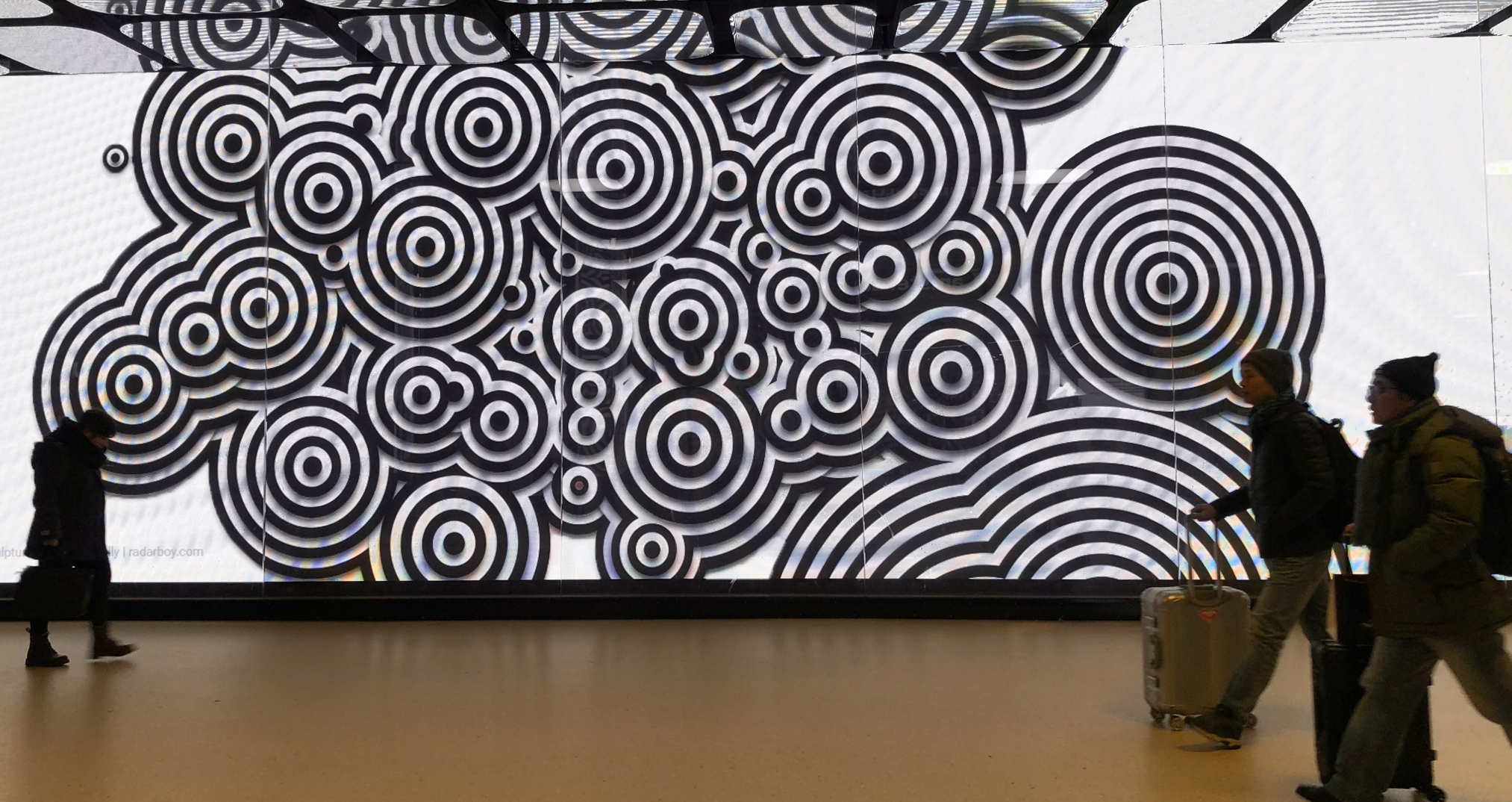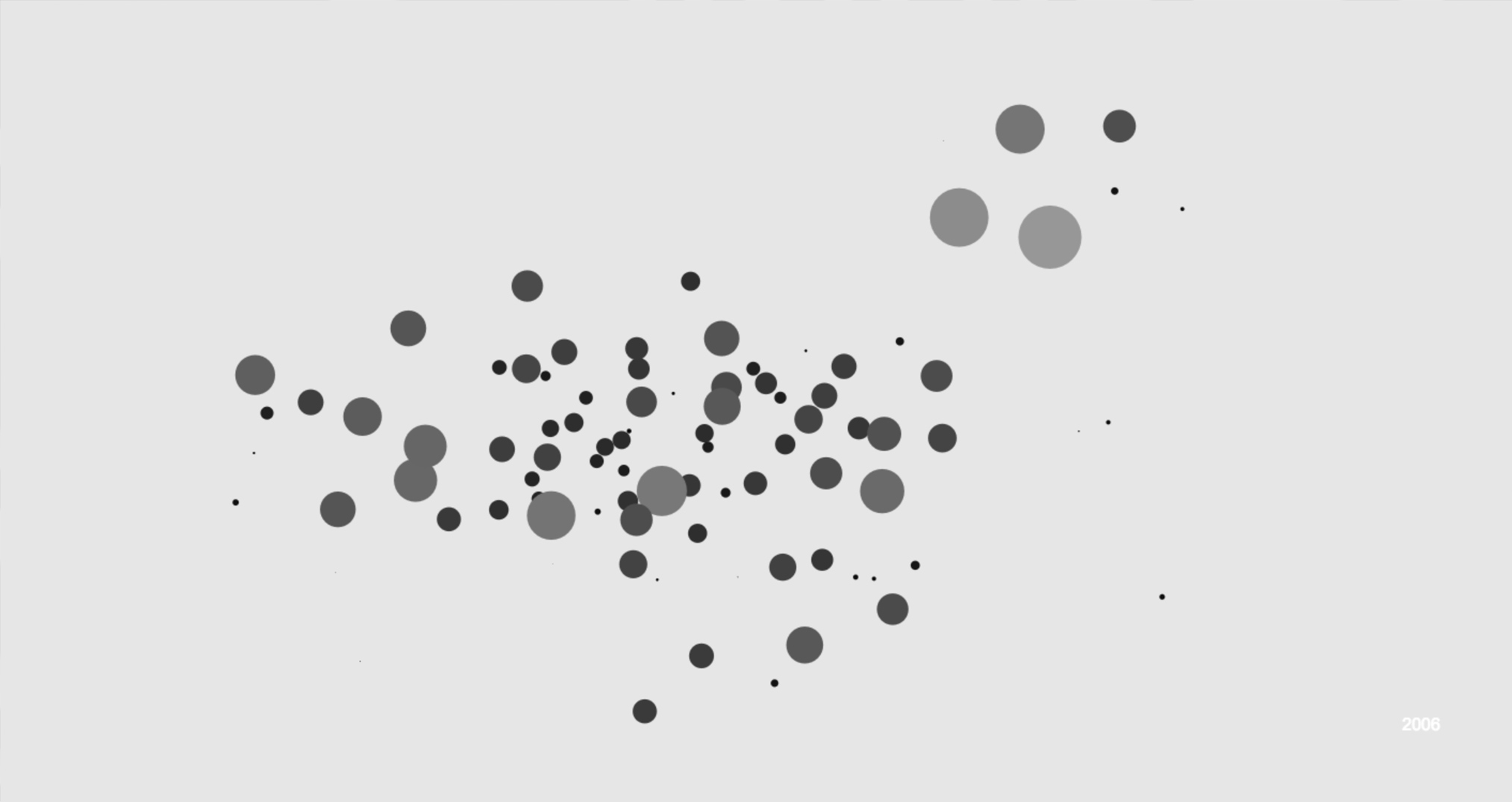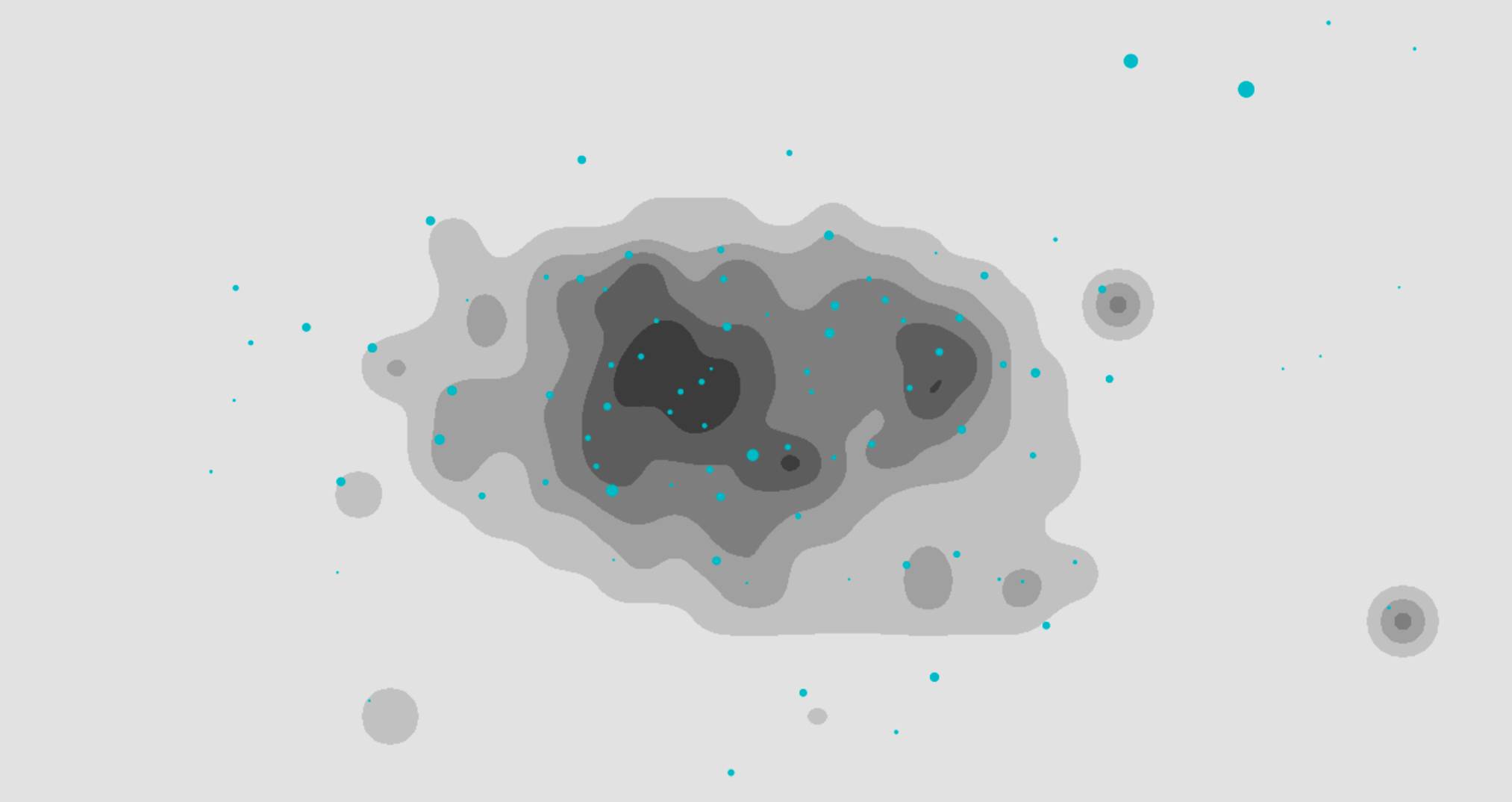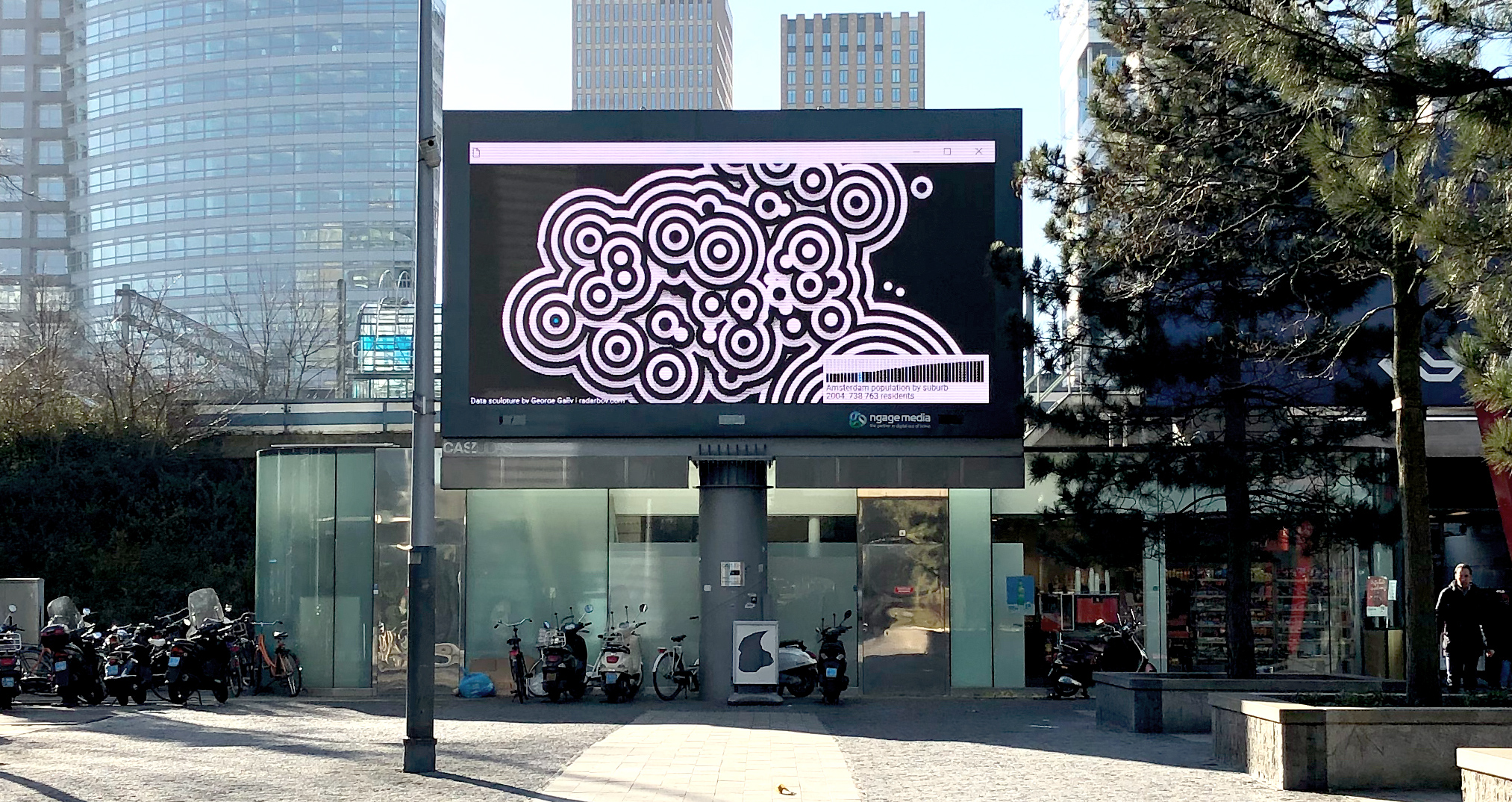A Million in the Making
The Amsterdam Data Project
Data, Concept, coding, design, animation
Public Data Sculpture.

A Million in the Making is a data sculpture tracking and predicting 50 years of Amsterdam population growth. Exploring births, deaths and changes in each suburb's population count as the city heads towards a million residents. The sculpture blurs the lines between suburbs, crosses boundries, and merges together in a constant push and pull, ebb and flow, as life happens, people move, die, get married and new residents arrive and are born.
I've always ben fascinated with big public data sets, so was super greatful to be able to create Amsterdam Data Project, part of a year long exploration into the wonderful world of open data in Amsterdam.

The Making of Counting to a Million:
The remit of the project is to create a new data sculpture every month for six months, with the option to do another six months, using data to create artworks across the Nethwerlands, on Ngage's beautiful giant media screens. Amsterdam Population
Growth - Counting to a Million, was the first.
The data sculptures were coded completely in Javascript, using libraries I've been developing over the past few years from my #Code365 project.
The data was obtained from the excellent data.amsterdam.nl and special thanks must given to the kind and generous help from Jasper Soetendal and DataLab Amsterdam.
Immigration and a changing Europe being such a hot topic these days, the sculpture looks at how Amsterdam has changed over time, and how it will change in the future. I've been travelling to Amsterdam for years, and have always been impressed
by the city's openess and inclusiveness. Turns out Amsterdam's growth has been pretty normal, and I would say it's tourism that's shaping and changing Amsterdam and Europe more than anything else, but that's another topic- and perhaps another data
visualisation.
I mashed up the population data with Amsterdam Suburb data to create a location-specific data set that could be plotted on a Google Map. I might say this in a sentence, but this was a mountain of work to get the data looking
and working in a way that I could start getting creative with it.

The data was then fed through a simple Machine Learning Neural Network to predict future population values, only to later discover Amsterdam had it's own (much
better) predictions.
Population numbers were then normalised to be able to work with more easily, and to get a better feel of changes though time. I like to sit with data like this for a while and watch it and "get to know it".
I also plotted births and deaths in each suburb, as well and changes in population, but eventually decided on using just the raw population dataset - which gave a good feel of how the population in Amsterdam had changed over time. Interestingly Amsterdam's populationcwas shrinking in the early 90s.

I then built attactors into the artwork. Where larger amounts pulled other suburbs closer together, showing movement as suburbs grew and shrunk over time, forming metaballs around the most populous areas.

The visualisation was then blurred and posterised, all in Javascript, getting closer to the look and feel I was wanting. However, the it was also getting way too slow (blurring is crazy heavy of the processor). I wanted them to render in realtime and despite using all the tricks in the book, such rendering on smaller a hidden off-screen canvas, I was still unable to get the balance of reasonable frame rate.

So I went back to the drawing board, to mimic the behavior I wanted, by simplifying and making the visuals more graphic (a look that was always my endpoint anyway), merging data points that were close together, and harcoding some of the heavy map calculations. And finally the look I was wanting started to come together.

All that was needed then was animate the data and make adjustments for the various screensizes, some of which have weird dimensions - Amsterdam Centraal Station has a widescreen dimension of 2112x608pm. I also gave the visualtion a layers drop shadow to give it a more depth and a slight 3D effect.

 A fed days before I was due to fly out to Amsterdam to test the visualtionso nthe big screens. I tried a
few variations of the design and it was clear the more graphic ones worked better and though white backgrounds looked awesome - they were way too bright.
A fed days before I was due to fly out to Amsterdam to test the visualtionso nthe big screens. I tried a
few variations of the design and it was clear the more graphic ones worked better and though white backgrounds looked awesome - they were way too bright. 
I am really grateful for the folks at Ngage Media, the Netherlands' leading network in Out of Home digital screens who made this happen and specifically Ngage's Daan Krijnen.
Amsterdam Counting to a Million was viewable for 6 months on the giant mediascreens at Amsterdam Centraal Station, Leidsplein and Amsterdam-Zuid WTC.
Special thanks to Ngage Media, the Netherlands' leading
network in Out of Home digital screens and specifically Ngage's Daan Krijnen for supporting this project.